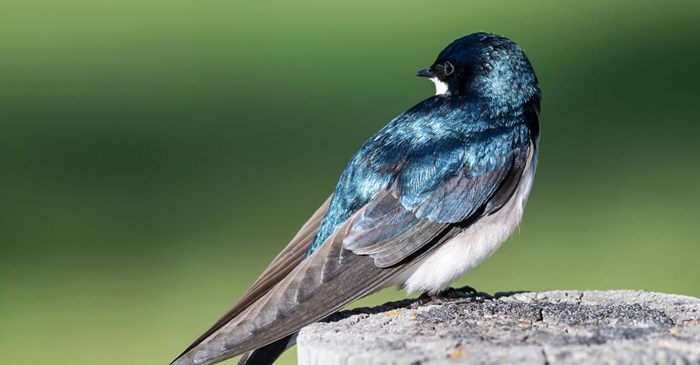You may have noticed that some birds in your backyard have feathers that glisten and shine. In dim lighting, they may appear dark and plain, but in others, the plumage becomes almost metallic or jewel-like as it shimmers with brilliant hues in reds, blues, greens and violets.
These “shiny” birds have iridescent feathers. Pigments color most feathers; however, in iridescent feathers, the shimmery quality has to do with the structure of the feather’s barbules. The microscopic-sized prisms split the light rays into color components. Depending on the lighting and angle, the color shadings appear to deepen and lighten — even disappearing — as the bird moves.
Do these feathers serve a purpose? Probably.
Birds are highly visual creatures. During nesting season, color and luster can make males more appealing to female birds. A male with plenty of shine advertises health and strength, capable of defending the nest and assisting with the round-the-clock feedings. So yes, it is likely that these shiny feathers have a purpose in that they give some male birds a step up during nesting season.
Here are some of the flashiest feeder visitors whose plumage shines and shimmers when caught in the light of the sun.
Ruby-throated Hummingbird
In the backyard, hummingbirds are the epitome of show-stopping radiance. The scarlet feathers at the throat of the male Ruby-throated Hummingbird are called a gorget, and if you can get an up-close look, it’s quite the ornament for such a tiny, speedy bird.
Black-billed Magpie
Although these intelligent corvids of the Western U.S. can appear black on first appearance, a closer look at Black-billed Magpies reveals glints of rich teals, bronzes and purples.
European Starling
Many birders are not a fan of these English imports. They are derided as a noisy, aggressive, invasive species that crowds birds and other species out of their nesting space. But look carefully at these beauties, and you can make out gorgeous tints of purple, blue and green in their shiny feathers that may just change your mind.
Tree Swallows
The green-blue plumage on the backs of Tree Swallows (shown above) glistens like jewels as they swoop, circle and twist through the air over fields and waterways to catch flying insects.
To attract the widest variety of birds to your backyard, fill your feeder with a hand-crafted, all-natural blend of seeds and nuts. Lyric Supreme Mix features black oil sunflower seeds, shelled peanuts and safflower, and other nutritious nuggets that will draw a colorful crowd.
